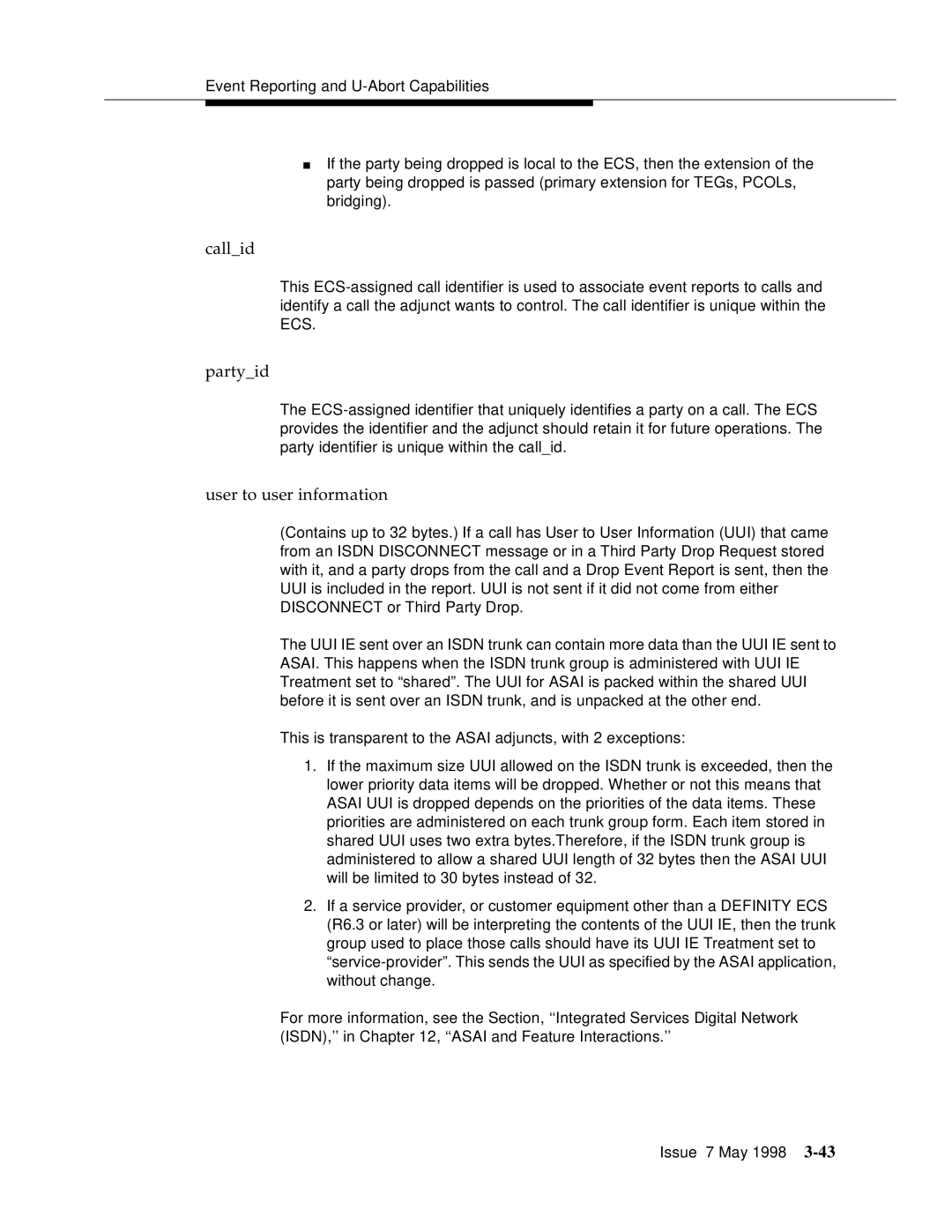Event Reporting and
■If the party being dropped is local to the ECS, then the extension of the party being dropped is passed (primary extension for TEGs, PCOLs, bridging).
call_id
This
party_id
The
user to user information
(Contains up to 32 bytes.) If a call has User to User Information (UUI) that came from an ISDN DISCONNECT message or in a Third Party Drop Request stored with it, and a party drops from the call and a Drop Event Report is sent, then the UUI is included in the report. UUI is not sent if it did not come from either DISCONNECT or Third Party Drop.
The UUI IE sent over an ISDN trunk can contain more data than the UUI IE sent to ASAI. This happens when the ISDN trunk group is administered with UUI IE Treatment set to “shared”. The UUI for ASAI is packed within the shared UUI before it is sent over an ISDN trunk, and is unpacked at the other end.
This is transparent to the ASAI adjuncts, with 2 exceptions:
1.If the maximum size UUI allowed on the ISDN trunk is exceeded, then the lower priority data items will be dropped. Whether or not this means that ASAI UUI is dropped depends on the priorities of the data items. These priorities are administered on each trunk group form. Each item stored in shared UUI uses two extra bytes.Therefore, if the ISDN trunk group is administered to allow a shared UUI length of 32 bytes then the ASAI UUI will be limited to 30 bytes instead of 32.
2.If a service provider, or customer equipment other than a DEFINITY ECS (R6.3 or later) will be interpreting the contents of the UUI IE, then the trunk group used to place those calls should have its UUI IE Treatment set to
For more information, see the Section, ‘‘Integrated Services Digital Network (ISDN),’’ in Chapter 12, ‘‘ASAI and Feature Interactions.’’
